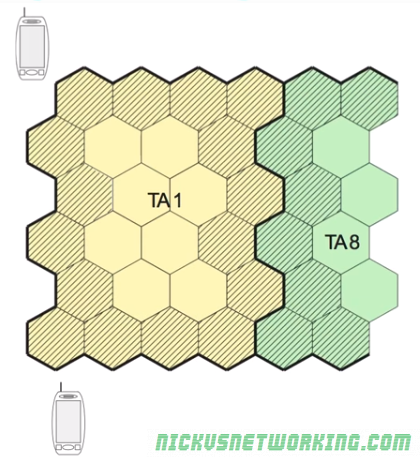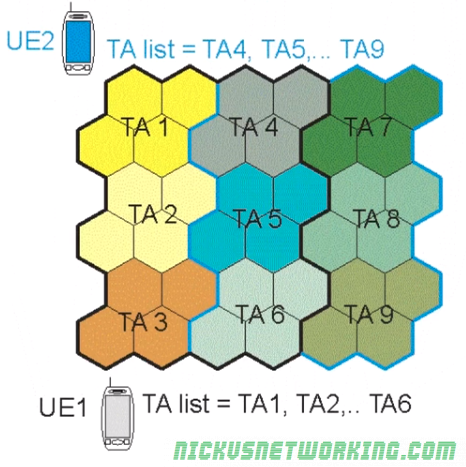These are my lecture notes from IMT’s NET02x (4G Network Essentials) course, I thought I’d post them here as they may be useful to someone. You can find my complete notes here.
As we saw before larger Tracking Areas minimize the number of UEs between terminals to update their location.
The problem is the cells/eNBs on the edge of the Tracking Area have to handle almost all of the Tracking Area Update requests, to inform the network the UE has moved to a new TA.

There’s an obvious imbalance between edge cells that handle almost all of Tracking Area Updates and the central cells inside a Tracking Area that handle very few many Tracking Area Update messages.
As we know we only have one radio interface, and sending Tracking Area Updates eats into our valuable radio resources that can’t be used to carry user data. Because of this users can experience a lower bit rate on edge cells.
To get around this we group Tracking Areas together into Tracking Area Lists.
A Tracking Area List is provided by the network to the UE, and contains a list of Tracking Areas, so long as the UE stays within the list of Tracking Areas, there is no need for it to send a Tracking Area Update.
You might think this just makes our problem worse, as now at the edges of the cells in the Tracking Area List we have even more signaling traffic, the clever part comes from the fact the network gives out different Tracking Area Lists to different UEs.
In the example below we can see UE2 has a different Tracking Area List to UE1.

This means the cell edges are different for UE1 and UE2, which spreads the signaling load across Tracking Areas, so while UE2 will send a Tracking Area Update when it reaches the border from TA1 to TA4, UE1 will send a Tracking Area Update when it passes from TA6 to TA9.
The other limitation of this is now to reach a UE paging must be sent on all cells in the Tracking Area List.